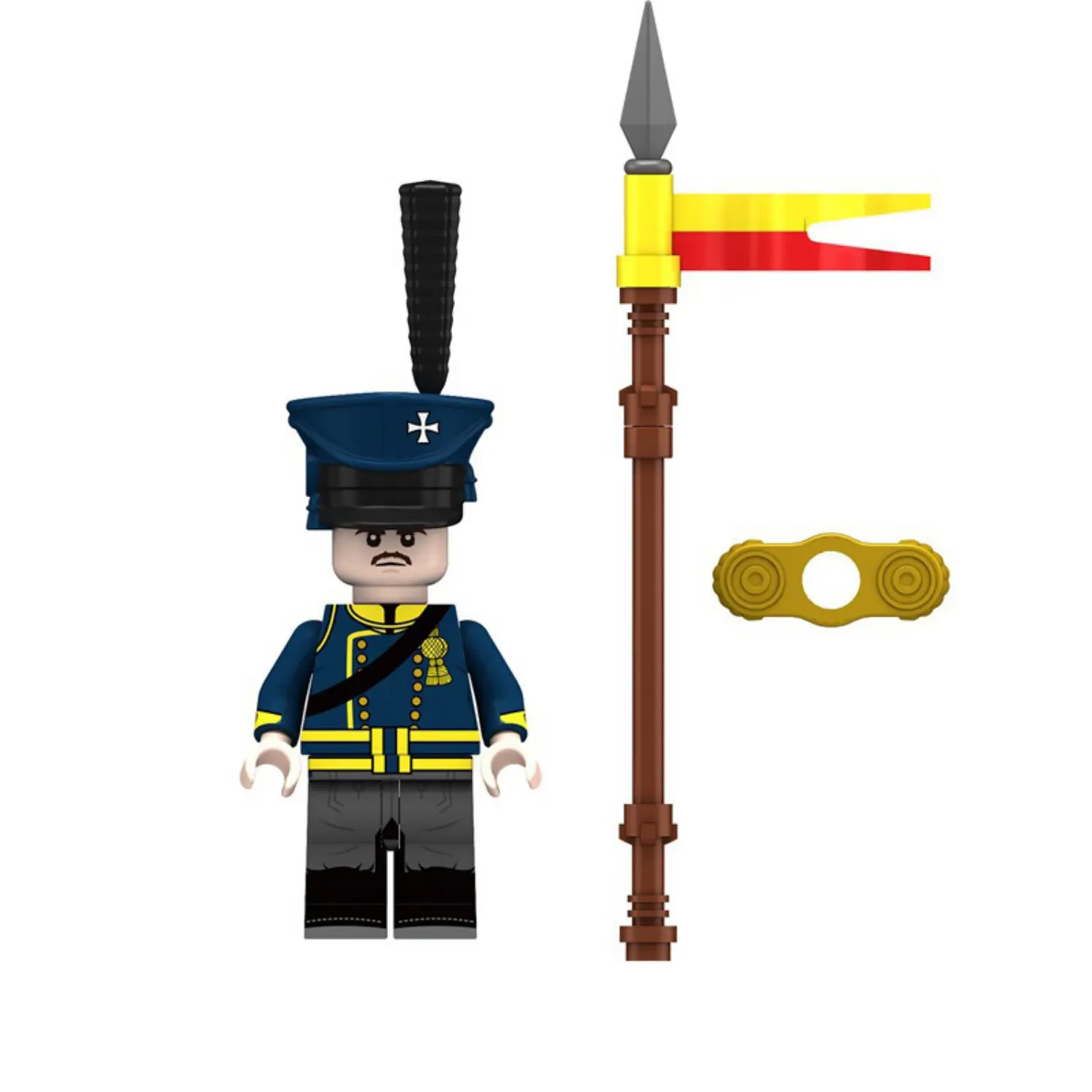This image displays a toy minifigure representing a Prussian Landwehr Cavalryman (Militia Lancer), specifically from the province of Silesia, during the Napoleonic Wars era (War of Liberation, 1813–1815).
Here is a detailed breakdown of the figure and its historical significance:
The Figure: Prussian Silesian Landwehr Cavalry This figure represents a “citizen-soldier” mounted on horseback. He is distinct from the regular Prussian Uhlans due to the specific insignia on his hat.
-
Headgear: He wears a blue Czapka (Lancer Cap) with a black band and a tall black plume. The most critical identifier is the White Cross printed on the front. This is the Landwehr Cross, a symbol worn exclusively by the militia to signify their patriotic crusade to liberate Germany. Regular army units would wear an Eagle or a rosette; the Cross marks him as a Landwehr volunteer.
-
Uniform: He wears a Dark Blue Tunic (Kurtka/Litewka style) with Yellow Facings (plastron/chest panel, collar, and cuffs). In the Prussian Landwehr system, the collar color identified the province the soldier came from. Yellow was the specific color for Silesia (Schlesien).
-
The Weapon: He carries a long Cavalry Lance. The pennant (flag) is Yellow over Red. While historical pennant colors varied by squadron, the yellow stripe aligns with the Silesian provincial color.
-
Accessories: The figure includes Gold Epaulettes (shoulder scales), suggesting this may represent an Officer or a wealthy volunteer who provided his own high-quality uniform.
-
Trousers: He wears grey campaign trousers with black boots, practical wear for active service.
Historical Background: The Prussian Landwehr Cavalry was formed in 1813 after Napoleon’s disastrous retreat from Russia. Prussia, seeking revenge and freedom from French occupation, called up all able-bodied men who could afford a horse and equipment. Unlike the infantry who were often poor, Landwehr cavalrymen were usually middle-class citizens, farmers, or students who brought their own horses. The Silesian Landwehr were particularly famous for their fighting spirit under Field Marshal Blücher. Despite being militia, they proved to be effective light cavalry, harassing the retreating French army relentlessly from Leipzig to Waterloo.



Reviews
There are no reviews yet.